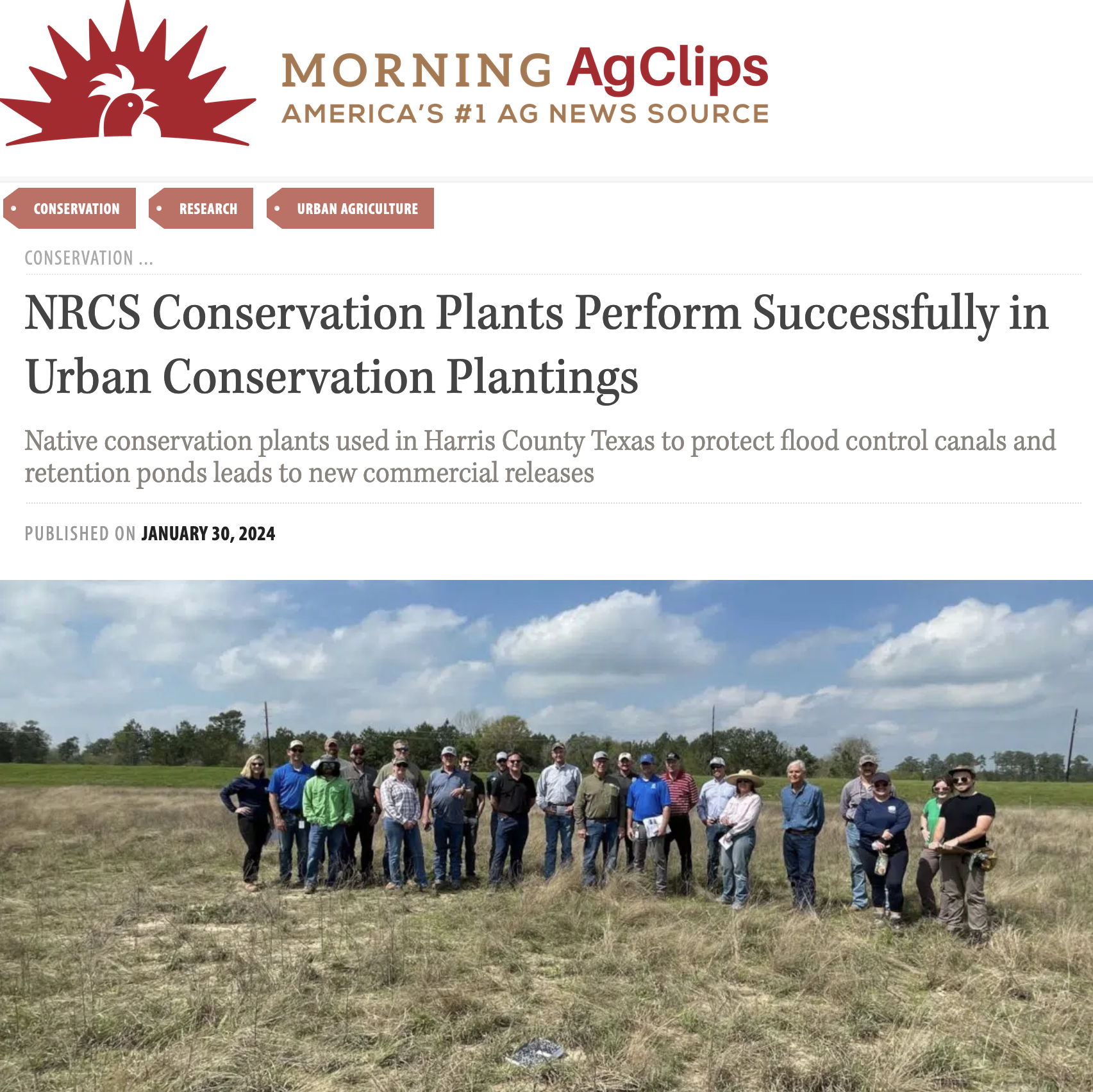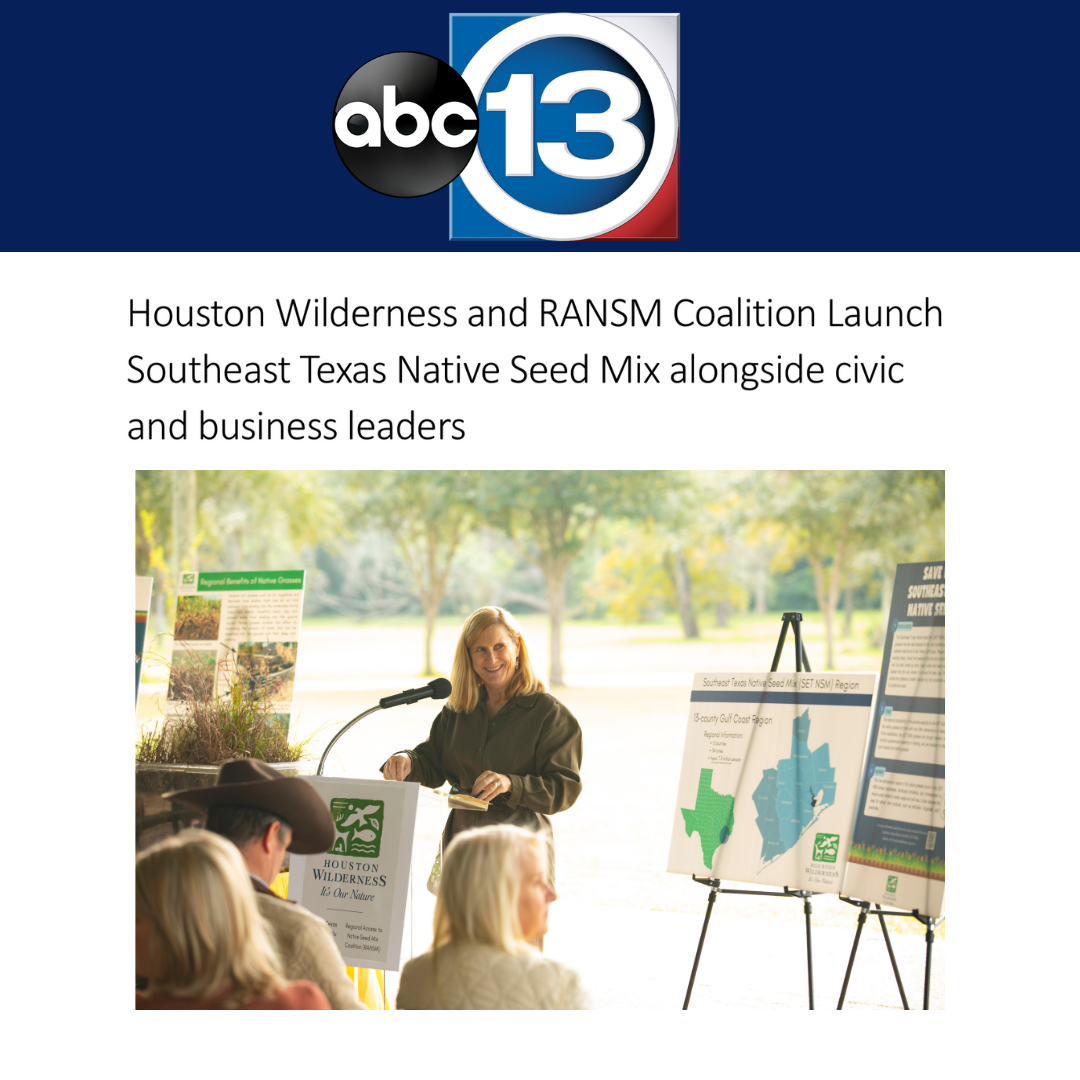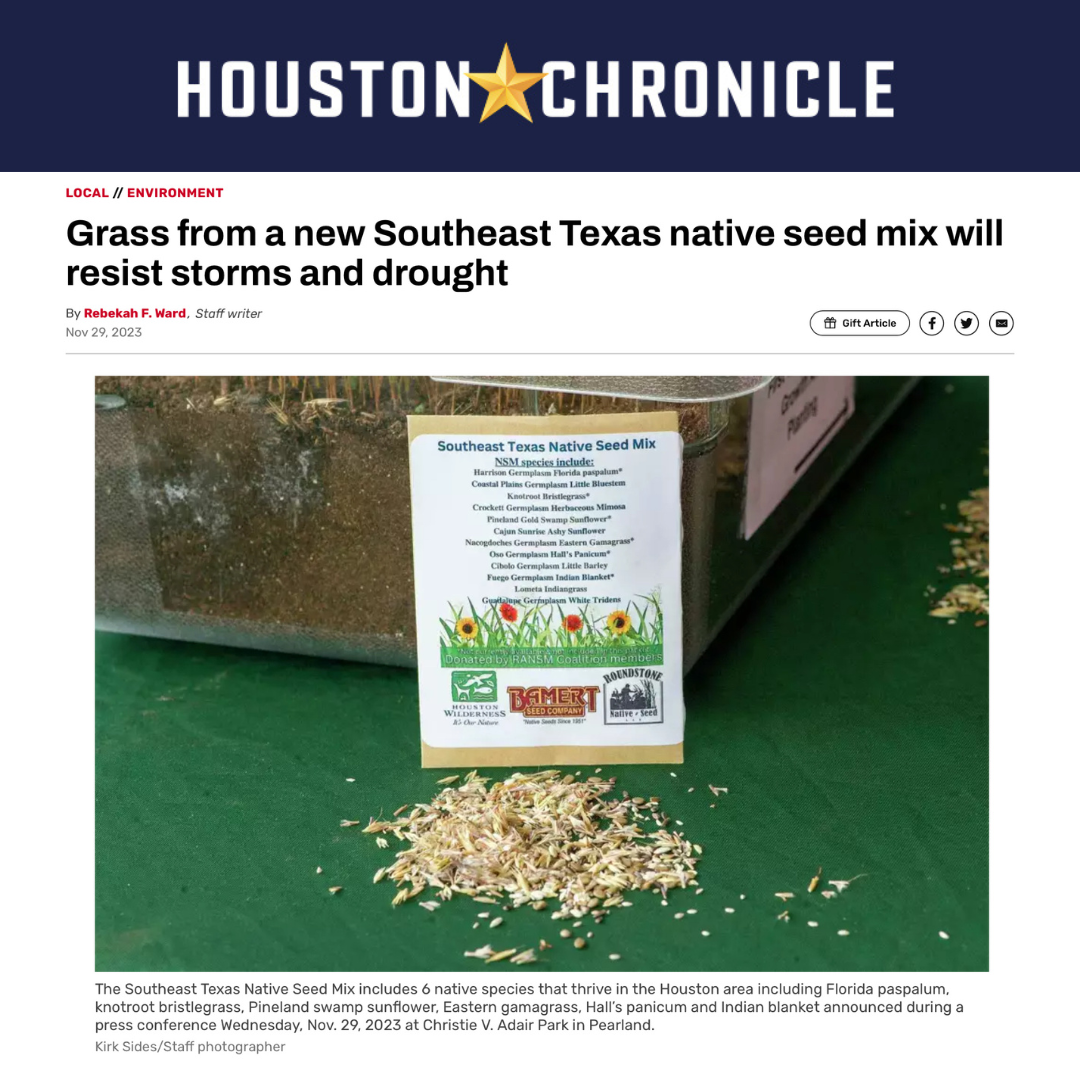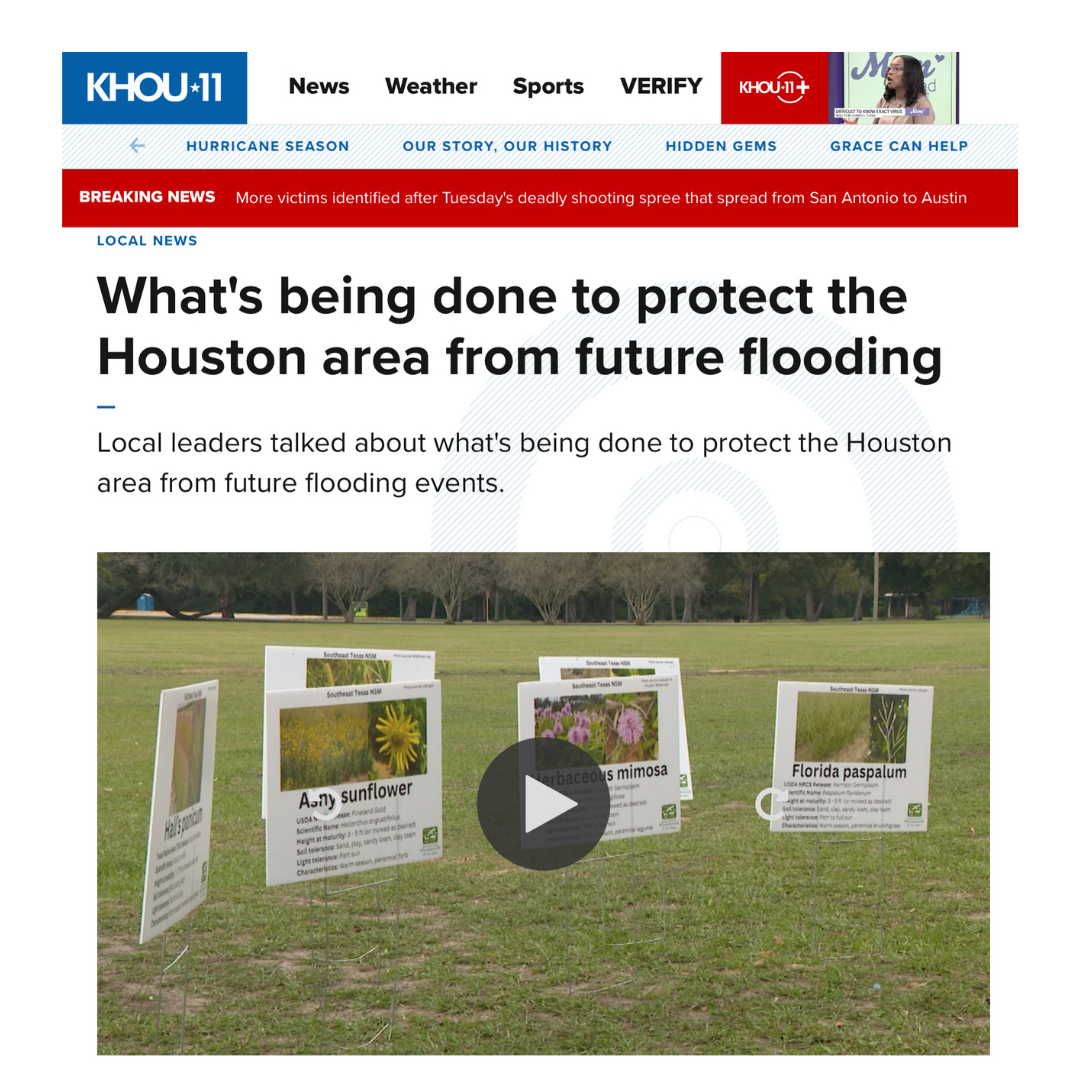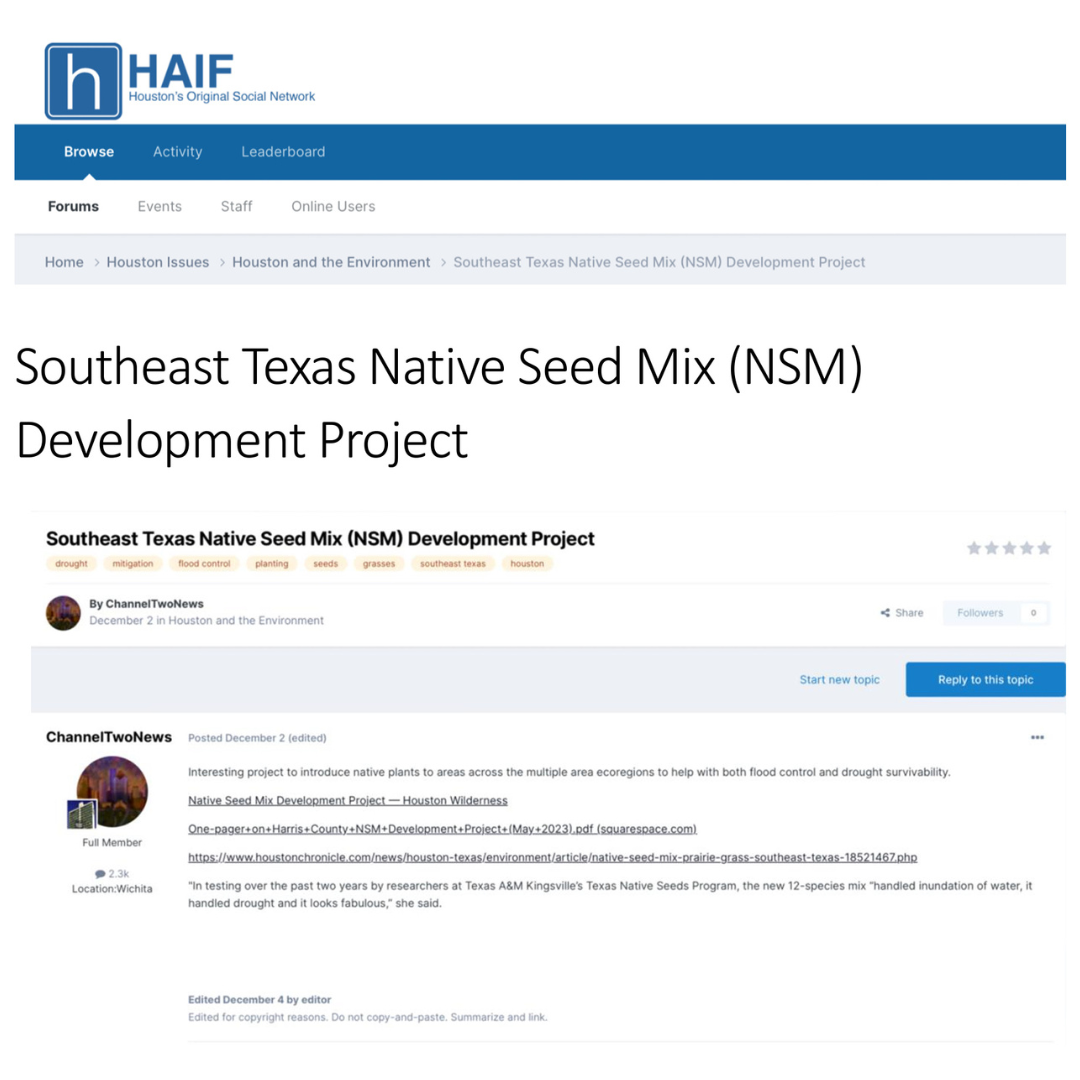RECENT NEWS:
UPDATE: BUCKET 1 DRAFT PROJECT LIST
[Current as of 2/17/2017 via www.RestoretheTexasCoast.org]
In consultation with the Office of the Governor a draft list of projects has been developed for the next phase of the evaluation to determine RESTORE Bucket 1 grant program recipients.
Please click here to view the draft list, including general information on each project.
The draft list was developed through a competitive process that began with a Request for Grant Applications (RFGA). Over 200 project applications requesting a combined total of $1.1 billion were received and reviewed to develop the draft list.
The next phase of the evaluation process will involve developing the draft Texas Multi-Year Implementation Plan (MIP), which will include the draft project list, as required under the RESTORE Act. The MIP with the draft project list will be posted for public comment in the Texas Register, as well as on the web site, http://www.restorethetexascoast.org/. During the 45-day comment period the public will have an opportunity to provide input and comments on the draft MIP as well as the draft project list. Comments received will be taken into consideration in the development of the final Texas MIP, including a final project list. The final MIP will be submitted to the U.S. Treasury for acceptance.
PUBLIC COMMENTS ON THE DRAFT PROJECT LIST ARE NOT BEING ACCEPTED AT THIS TIME
Approximately $66 million is currently available for Texas Bucket 1 RESTORE grants, which is a reimbursement program. A project’s inclusion on either the draft MIP or in the final MIP does not guarantee that it will receive a RESTORE Bucket 1 grant. Upon Treasury’s acceptance of the state’s MIP, including the project list, Commissioner Baker, in consultation with the Governor, will determine which projects will move forward to the federal grant application phase. Project funding becomes available only after the federal grant applications have been submitted and approved by Treasury. These applications cannot be submitted until after Treasury has accepted the state’s MIP.
PROCESS — The review and selection process is competitive and includes elements from other state and federal grant programs. The scoring criteria is based on the Priorities Document and is included in the RFGA. The initial list of selected projects will be posted for a 45-day public comment period and the final list of selected projects will be included in the Multi-year Implementation Plan required by U.S. Treasury to secure grant funds.
FEDERAL REQUIREMENTS – Applicants should be acquainted with the federal terms and conditions governing RESTORE Direct Component Grants.
FRAMEWORK — The Framework Document outlining the importance of the Texas coast and Texas’ implementation of the RESTORE Act, “CONSERVE, RESTORE, RENEW,” has been published.
UPDATE on RESTORE B1 RFGA - Gulf of Mexico Alliance - NOV. 2016
RESTORE Council - In October, the Council concluded a public comment period on their Draft Comprehensive Plan Update. Public meeting summaries are now available. Read RESTORE Council Chair USDA Agricultural Secretary Tom Vilsack's October 20th blog post on a healthy Gulf. Information on this and other Council activity is on their website RestoreTheGulf.gov.
IN TEXAS - THE REQUEST FOR GRANT APPLICATIONS (RFGA) FOR THE RESTORE DIRECT COMPONENT (BUCKET 1) GRANT FUNDS ARE STILL BEING REVIEWED. CHECK WWW.RESTORETHETEXASCOAST.ORG REGULARLY FOR THE ANTICIPATED RELEASE OF SELECTED PROJECTS.
UPDATE ON STATUS: RESTORE Direct Component (Bucket 1) RFGA
The Bucket 1 Review Team has submitted its evaluations of the more than 200 project applications, totaling approximately $3.4 billion, received in response to the RFGA for the RESTORE Direct Component (Bucket 1) grant funds.
As a reminder, the Bucket 1 Review Team consisted of representatives from several state agencies and the Governor’s Office. Commissioner Baker is in the process of reviewing those completed evaluations and the applications to identify potential projects for funding.
Following Baker’s review, and in collaboration with the Governor, a draft project list will be selected for inclusion in the State’s Multi-Year Implementation Plan (MIP). Under the RESTORE Act this plan is required to secure project funding and will be posted for public comment prior to submission to U.S. Treasury.
Please continue to visit this website for information on when the draft MIP, with the project list, will be posted in both the Texas Register and this website for public comment. Following the 45-day comment period, the finalized MIP will be submitted to the U.S. Treasury for acceptance.
We appreciate the overwhelming interest in the RESTORE Act program and look forward to presenting an MIP to the public that maximizes the benefit of these funds to the environment and economy of the Texas coast.
Texas Trustee Implementation Group Calls for Restoration Project Proposals
The Texas Trustee Implementation Group (Texas TIG) is calling for new or revised restoration proposals by August 31, 2016 in preparation for the next phase of Natural Resource Damage Assessment (NRDA) restoration planning.
Restoration funds allocated to the Texas TIG must be used for five specific restoration types. Early Restoration projects are already funding bird and sea turtle restoration types. Therefore, the Texas TIG is prioritizing current restoration planning efforts on restoration types that were not addressed previously:
1) restore and conserve wetland, coastal,and nearshore habitats;
2) restore water quality through nutrient reduction (nonpoint source); and
3) replenish and protect oysters.
The Texas TIG will also consider projects for engineering and design that focus on the three restoration types mentioned above. The focus will be on these restoration categories, however the Texas TIG will continue to consider any important opportunities for additional restoration and protection of avian resources and sea turtles. All projects will be evaluated using the criteria established in the NRDA regulations (15 CFR 990.54).
Approximately $47.6 million is currently available for restoration project funding in Texas this year. In addition, over the next 15 years, the Texas TIG will receive approximately $124.8 million in additional restoration funding. The current restoration planning effort may utilize all or part of these funds. The Texas TIG may propose both discrete restoration projects as well as one or more programmatic restoration efforts. Each of the projects and programmatic efforts may require multiple years to complete and they may be funded in part by restoration funds received in the future.
Please submit your proposal by August 31, 2016 to be considered by the Texas TIG for the draft restoration plan expected to be released in spring 2017. If you have any questions or need further assistance, please contact TXDWHNRDA@tpwd.texas.gov.
National Fish and Wildlife Foundation Announces Projects
More than $80 Million goes toward a third round of Gulf restoration programs
On Tuesday, November 10th the National Fish and Wildlife Foundation (NFWF) announced the award of more than $80 million from its Gulf Environmental Benefit Fund (GEBF). The funding will go toward 22 projects in the states of Alabama, Florida, Mississippi and Texas. This is the third round of grants from the Gulf Environmental Benefit Fund (GEBF). Read NFWF's full story.
Texas
- Galveston Island State Park Marsh Restoration & Protection - Phase II $3,234,500
- Galveston Bay Sustainable Oyster Reef Restoration $2,500,000
- Candy Abshier Wildlife Management Area Shoreline Protection Marsh Restoration $245,000
- Falcon Point Ranch Conservation Easement Acquisition $2,910,900
- Matagorda Bay Rookery Island, Feasibility Study & Alternatives Analysis $250,000
- Bahia Grande Coastal Corridor- Boswell-Jenkins Tract Acquisition $400,000
- Bahia Grande Restoration $400,000
- Cow Trap Lake Bird Nesting Island Improvements $440,000
Each Gulf State works with NFWF to solicit and select projects for funding. Go to NFWF's Gulf Environmental Benefit Fund webpage and click on the interactive map for how your state implements this funding opportunity.
Track these and other funded projects with the Deepwater Horizon Project Tracker
Announcement of Restore Listening Sessions
Commissioner Toby Baker, Texas designee to the federal RESTORE Council, is hosting four Listening Sessions along the coast in September. The purpose of the Listening Sessions is to give the public an opportunity to comment on the priorities for the Texas coast as we move forward with implementing the federal RESTORE Act and distributing RESTORE funds.
Specifically the public is invited to comment on the Priorities Document, which outlines the criteria for awarding RESTORE funds and is based on elements of grant review processes currently accepted by the Federal government.
A Framework document has been developed to facilitate the discussion of the implementation of the RESTORE Act in Texas. Among other things, the Framework document describes the importance of a healthy coastal community on both the environment and economy of Texas and the United States.
In addition to receiving comments at the Listening Sessions, written comments will be accepted until October 9th at this web site.
The public input will be used to develop scoring criteria for the RESTORE project selection process. That scoring criteria will be posted on the web site when a call for RESTORE-funded projects is announced, as well as included in the Request for Grant Applications (RFGA).
Below are the dates, times and locations of the four Listening Sessions.
Each Listening Session will begin with a brief presentation on the Federal RESTORE Act, including project eligibility and funding.
Monday, September 14th
6:30 pm to 8:30 pm
Galveston
A&M Galveston
Classroom Laboratory Building (CLB)
Building 3007, Room 100 (Auditorium)
200 Seawolf Parkway
Galveston, TX 77553
Tuesday, September 15th
6:30 pm to 8:30 pm
Beaumont
Lamar University
University Theater Building
Beaumont, TX 77705
Monday, September 28th
6:30 pm to 8:30 pm
Brownsville
UT Brownsville
El Gran Salon
One West University Blvd
Brownsville, TX 78520
Tuesday, September 29th
6:30 pm to 8:30 pm
Corpus Christi
A&M Corpus Christi University Center
Anchor Ballroom A&B
6300 Ocean Drive
Corpus Christi, TX 78412
OTHER NEWS:
RESTORE Council Announces Funded Priorities List
The Gulf Coast Ecosystem Restoration Council has released a draft initial Funded Priorities List. TCEQ Commissioner Toby Baker is the Texas appointee to the Council.
This draft FPL, approximately $140 million in restoration activities, includes several projects in Texas. This FPL will be funded from the settlement with Transocean.
The Council will host a series of public meetings across the Gulf Coast to seek comments from the public. The meeting in Texas will be held on Thursday, August 20, in Corpus Christi. It will begin at 6:00 p.m. on the campus of Texas A&M University/Corpus Christi in the Center’s Lonestar Ballroom.
For additional information on the draft FPL, as well as meeting details, visit the Council’s website atwww.RestoreTheGulf.gov. Public comments can also be sent to that website address.
Announced on July 2nd, 2015:
Texas Reaches Agreement on Deep Water Horizon Case; Governor Abbott and Gulf Restoration Groups Issue Statements
The agreement between BP and affected states on the Gulf Coast established that BP will pay over $20 billion in damages and penalties, of which Texas will receive more than $750 million. Governor Abbott announced “After five years, I’m proud to announce that Texas, along with the other Gulf States, has reached an agreement in principle with BP to resolve all the states’ claims. This settlement will allow Texas to reinvest in the Gulf community and reinvigorate the economic and environmental health of the region.”
The Environmental Defense Fund, National Wildlife Federation, National Audubon Society, Ocean Conservancy, The Nature Conservancy, Coalition to Restore Coastal Louisiana and Lake Pontchartrain Basin Foundation issued a statement praising the speed at which state and federal leaders have reached an agreement, announcing "This settlement, which promises to be the largest environmental settlement in American history, is an unprecedented opportunity to accelerate and expand the response to the devastating harm caused by the spill, and to build lasting resilience into the essential ecosystems of the Gulf." The statement can be read in full here.
Details Of The Settlement from the Office of the Governor:
BP will pay a total of $20.2 billion in damages and penalties:
$5.5 billion in Clean Water Act penalties.
This amount will fund projects in the Gulf-Wide RESTORE Act plan.
$8.8 billion in Natural Resource Damages.
This is under the federal Oil Pollution Act.
$4.9 billion in Economic Damages to the Gulf States.
Texas will see a large amount of money that will be part of Texas’ Gulf Restoration plan
The Clean Water Act penalties and the Natural Resource Damages penalties will be a 15 year payout plan starting in 2017.
The History on the Three Sources of Funds Related to the BP Oil Spill
A. Natural Resource Damage Assessment (NRDA) fund – this funding source was created under the authority of the Oil Pollution Act for early Gulf Coast restoration (see here)
B. National Fish & Wildlife Foundation (NFWF) Gulf Environmental Benefit Fund – this funding source was created out of the criminal settlements associated with the BP Oil Spill. In addition to consulting with the National Oceanic and Atmospheric Administration (NOAA) and the U.S. Fish and Wildlife Service, NFWF will consult with the following state agencies in each of the designated states:
· Texas Parks and Wildlife Department,
· Texas Commission on Environmental Quality, and
· Texas General Land Office
C. RESTORE ACT fund – See here
The money in the Gulf Coast Restoration Trust Fund will be allocated to the Gulf Coast states and the Gulf Coast Ecosystem Restoration Council in five different "buckets" or "pots," according to the following guidelines:
Bucket 1 - 35 percent divided equally between the five Gulf Coast States to be used for ecosystem restoration, economic development & tourism promotion (Direct Component);
Bucket 2 - 30 percent for ecosystem restoration under the Comprehensive Plan developed and approved by the Council (Comprehensive Plan Component);
Bucket 3 - 30 percent divided among the five Gulf Coast States according to a formula to implement State Expenditure Plans, which require Council approval–each Gulf state is guaranteed a minimum of 5% of the 30% allocation (Spill Impact Component);
2.5 percent dedicated to the National Oceanic and Atmospheric Administration to establish a Gulf Coast Ecosystem Restoration Science, Observation, Monitoring & Technology Program; and
2.5 percent allocated to the Gulf Coast States to award grants to establish Centers of Excellence.
II. Submitting specific Gulf Restoration projects in your area
A. Submit Projects Ideas
To submit projects under the new Texas Specific Website for all three funding sources - See http://www.restorethetexascoast.org/ and http://www.gulfspillrestoration.noaa.gov/restoration/give-us-your-ideas.
B. View Submitted Projects
http://www.gulfspillrestoration.noaa.gov/restoration/give-us-your-ideas/view-submitted-projects/


